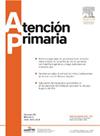The physical activity and sedentary behavior of pregnant women with gestational diabetes mellitus: A cross-sectional study
IF 1.8
4区 医学
Q2 MEDICINE, GENERAL & INTERNAL
引用次数: 0
Abstract
Background
Although physical activity is recommended as a measure for treatment and management of gestational diabetes mellitus (GDM), little is known about the status of sedentary behavior, barriers and enablers to exercise, and the needs for exercise guidance in pregnant women with GDM.
Aim
The objectives of this study were to investigate the status of physical activity, sedentary behaviors and needs for exercise guidance in pregnant women with GDM, and explore its barriers, enablers and determinants.
Method
A cross-sectional study was conducted. A self-designed questionnaire was used to collect the data of exercise, sedentary behavior and barriers/enablers to exercise. Pregnancy Physical Activity Questionnaire was used to evaluate the physical activity. A stepwise multivariate logistic regression was conducted to analyze the determinants of exercise among pregnant women with GDM.
Findings
A total of 371 questionnaires were collected. The exercise compliance rate was only 27.42%. 41% of pregnant women with GDM had sedentary time more than 6 h per day. 50.9% of participants had sedentary lifestyle. The most common barriers and enablers to physical activity were pregnancy symptoms or discomfort (32.1%) and easier glycemic control (88.9%), respectively. Advanced age (≥ 35 years old), low capita monthly family income, and the number of sedentary-lifestyle days (OR = 1.227, 95%CI 1.090–1.382, P = 0.001) were the independent risk factors for failing to meet exercise standard among pregnant women.
Discussion/Conclusion
Health care providers should provide interventions based on reducing sedentary behavior and increasing moderate physical activity to minimize the potential health problems in pregnant women with GDM.
妊娠期糖尿病孕妇的身体活动和久坐行为:一项横断面研究
虽然体育活动被推荐作为治疗和管理妊娠期糖尿病(GDM)的一项措施,但对GDM孕妇久坐行为的状况、运动的障碍和促进因素以及运动指导的需求知之甚少。目的研究妊娠期糖尿病孕妇的身体活动状况、久坐行为和运动指导需求,探讨其障碍、促进因素和决定因素。方法采用横断面研究。使用自行设计的问卷收集运动、久坐行为和运动障碍/促进因素的数据。采用孕期体力活动问卷对孕妇进行体力活动评估。采用逐步多因素logistic回归分析GDM孕妇运动的决定因素。调查结果共收集问卷371份。运动依从率仅为27.42%。41%患有GDM的孕妇每天久坐时间超过6小时。50.9%的参与者有久坐不动的生活方式。最常见的身体活动障碍和促进因素分别是怀孕症状或不适(32.1%)和更容易控制血糖(88.9%)。高龄(≥35岁)、家庭人均月收入低、久坐不动的生活方式天数(OR = 1.227, 95%CI 1.090 ~ 1.382, P = 0.001)是孕妇运动不符合标准的独立危险因素。讨论/结论卫生保健提供者应提供基于减少久坐行为和增加适度体育活动的干预措施,以尽量减少妊娠糖尿病孕妇的潜在健康问题。
本文章由计算机程序翻译,如有差异,请以英文原文为准。
求助全文
约1分钟内获得全文
求助全文
来源期刊

Atencion Primaria
医学-医学:内科
CiteScore
2.90
自引率
8.00%
发文量
156
审稿时长
33 days
期刊介绍:
Atención Primaria es una revista que publica trabajos de investigación relativos al ámbito de la atención primaria de salud. Desde el punto de vista conceptual, Atención Primaria asume el nuevo modelo de atención primaria de salud, orientado no sólo a la curación de la enfermedad, sino también a su prevención y a la promoción de la salud, tanto en el plano individual como en el de la familia y la comunidad. En estos nuevos aspectos que definen el modelo de atención primaria de salud es en los que se centran los trabajos de investigación que publica Atención Primaria, la primera revista de originales española creada para recoger y difundir la producción científica realizada desde los centros de atención primaria de salud sobre cuestiones como protocolización de la asistencia, programas de prevención, seguimiento y control de pacientes crónicos, organización y gestión de la asistencia primaria, entre otros.
 求助内容:
求助内容: 应助结果提醒方式:
应助结果提醒方式:


